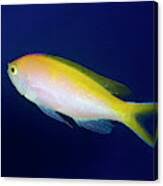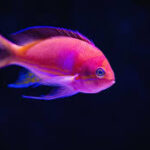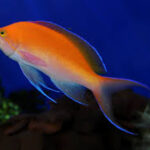The Evolution of the Dragon Image in Traditional Chinese Decorative Items

The dragon is an iconic symbol in Chinese culture, representing power, prosperity, strength, and good fortune. Throughout China’s long and rich history, the dragon’s image has evolved and integrated into various aspects of daily life, particularly in decorative items. These items, ranging from furniture to clothing, serve not only as functional objects but also as symbols of status, protection, and wealth. This article delves into the development of the dragon image in traditional Chinese decorative items, examining how it has been used to reflect cultural values, social hierarchies, and artistic styles across different dynasties.
The Symbolism of the Dragon in Chinese Culture
The dragon holds a deeply significant place in Chinese culture. Unlike the Western depiction of dragons as fearsome, destructive creatures, the Chinese dragon is considered a benevolent, powerful, and auspicious being. It symbolizes the emperor’s authority, the harmony of nature, and the balance between the spiritual and physical realms. The dragon’s association with water, weather, and agriculture further elevates its significance, as it was believed to control rainfall and ensure prosperity.
In Chinese art and design, the dragon often appears in the most prestigious and symbolic contexts. As a result, it became a recurring motif in decorative items, from personal objects to large-scale architectural elements, reflecting the dragon’s importance in both everyday life and ceremonial practices.
Early Depictions of the Dragon: The Shang and Zhou Dynasties
The earliest representations of dragons in Chinese art can be traced back to the Shang Dynasty (c. 1600–1046 BCE), where dragon-like motifs were carved into bronze vessels and jade ornaments. These early dragons were often stylized, depicted with serpentine bodies and fierce, intimidating faces. The symbolism of the dragon during this period was closely linked to imperial authority and ritualistic practices, as the dragon was believed to mediate between humans and the gods.
In the Zhou Dynasty (1046–256 BCE), the dragon evolved in form, becoming more fluid and serpentine, with detailed scales and more elongated bodies. It was often associated with the emperor, who was seen as the “son of the dragon.” Dragon images were frequently used in ritual vessels and ceremonial items, which were believed to channel divine power during sacrifices to ancestors and gods.
The Han Dynasty: The Dragon as a Symbol of Power and Prestige
During the Han Dynasty (206 BCE–220 CE), the dragon’s image underwent further refinement. As China expanded its empire, the dragon’s role as a symbol of imperial authority became more pronounced. The Han emperors often used dragon motifs in their personal adornments and court items to assert their divine right to rule.
One of the most famous uses of the dragon during this period was its appearance on imperial clothing. Emperor robes, made from silk and embroidered with intricate dragon designs, were symbols of absolute power. The dragon was also widely used in ceremonial objects such as ritual vessels, mirrors, and furniture. These decorative items were not only functional but served to emphasize the emperor’s supremacy over the natural and spiritual worlds. The use of gold, jade, and silk in these items further underscored the dragon’s association with wealth and prosperity.
The Tang Dynasty: A Time of Artistic Flourishing
The Tang Dynasty (618–907 CE) marked a golden age in Chinese art, and the dragon continued to play a central role in decorative items. During this period, the image of the dragon became more intricate and expressive. The dragon was often shown with five claws, a feature reserved exclusively for the emperor, symbolizing his supreme power and connection to the divine.
In the Tang Dynasty, ceramics, such as vases and pottery, adorned with dragon motifs were highly valued. These items, often glazed with bright colors, became symbols of wealth and luxury. The intricate patterns of dragons were also incorporated into silk textiles, such as robes and banners, where they were used to denote the status of the wearer or the celebratory nature of the occasion.
The Song and Yuan Dynasties: Refinement and Elegance
The Song Dynasty (960–1279 CE) witnessed a refinement in the depiction of dragons. Artists during this time emphasized elegance and simplicity, and the dragon’s image became more stylized and delicate, reflecting the period’s focus on aestheticism. The dragon was often incorporated into porcelain items, such as teapots, bowls, and plates, where it symbolized not only power but also the grace and beauty that were highly valued during the Song period.
During the Yuan Dynasty (1271–1368 CE), Chinese culture was influenced by the Mongol rulers, and dragon motifs began to appear in carved wood, lacquerware, and metallic objects. The design of the dragon became more dynamic and fluid, incorporating both power and elegance. The Yuan period also saw the rise of dragon carpets, which were woven with intricate patterns, often placed in royal palaces and temples to symbolize the emperor’s connection to the cosmic forces.
The Ming Dynasty: The Height of Dragon Imagery
The Ming Dynasty (1368–1644 CE) is often considered the pinnacle of traditional Chinese art, and the dragon image reached new heights of prominence. During this period, the dragon became firmly associated with the emperor’s mandate of heaven, and its image was used extensively in both imperial and public decorative items.
One of the most iconic examples of dragon imagery during the Ming Dynasty is the imperial robes, which were richly embroidered with five-clawed dragons, symbolizing the emperor’s celestial authority. Dragon motifs were also commonly found in ceramic pieces, such as vases, bowls, and jars, often featuring intricate patterns of swirling clouds and flames, which conveyed the dragon’s supernatural powers. These items were often made of fine porcelain and were highly valued for their beauty and craftsmanship.
The Qing Dynasty: The Dragon as a Symbol of Imperial Rule
The Qing Dynasty (1644–1912 CE), China’s last imperial dynasty, saw the continuation and elaboration of dragon imagery in decorative items. The Qing emperors used the dragon as the central motif in many of their imperial decorations, including throne rooms, ceremonial objects, and clothing. The dragon’s role as the emperor’s personal emblem was reinforced, and it became synonymous with imperial authority and legitimacy.
In addition to furniture and ceramic pieces, the dragon was featured in jewelry, such as pendants and bracelets, often made from precious metals and gemstones. The dragon’s image was also incorporated into wall hangings, screens, and carved wooden panels throughout the imperial palaces, symbolizing the emperor’s divine connection to the cosmos.
The Evolution into Contemporary Decorative Items
In modern times, the dragon continues to inspire Chinese decorative arts, though its representation has evolved to reflect the changes in culture and society. While traditional designs are still used in furniture, porcelain, and textiles, contemporary designs have adapted the dragon image to include more abstract and stylized representations. Artists now use the dragon to symbolize not just imperial authority but also the cultural heritage and national pride of China.
Today, the dragon can be found in home décor, fashion, and even modern art, serving as a reminder of China’s rich history and cultural traditions. While the role of the dragon has shifted over the centuries, its symbolism of power, prosperity, and protection remains unchanged, continuing to influence the decorative arts in China.
Conclusion
The image of the dragon in traditional Chinese decorative items has undergone a fascinating evolution, reflecting the changing artistic styles, cultural values, and political climates of different dynasties. From its early depictions in bronze and jade to its refined representations in ceramics, textiles, and royal regalia, the dragon has remained a central figure in Chinese art and design. Its symbolic association with power, wealth, and divine authority has made it a timeless element of Chinese culture, woven into the fabric of decorative items that continue to be cherished today.

